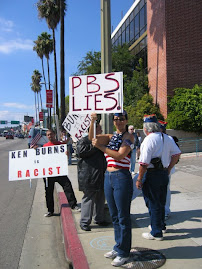
With the start of the fall 2008 semester approaching, California State University Channel Islands will inaugurate its Chicana/o Studies: Transborder Communities BA degree (http://www.csuci.edu/academics/catalog/2008-2009/15_programsanddegrees/08_chicanoastudies.htm ). To assist in leading the implementation of this new and innovative program in Chicana/o Studies, CSUCI successfully recruited Associate Professor José M. Alamillo from Washington State University. Professor Alamillo is the author of the well received book "Making Lemonade Out of Lemons, Mexican American Labor and Leisure in a California Town, 1880-1960." The core argument of this groundbreaking study contends that Mexican men and women in the lemon industry company town of Corona (in Riverside County) tapped into the inner-workings of leisure sites for organized political action.
The son of parents who labored in the packinghouses and citrus orchards of Ventura County, Professor Alamillo is returning home. He is also the product of the University of California at Santa Barbara’s Education Opportunity Program (EOP). His participation in the programming of EOP began when he was in middle school as it implemented strategies to capture the imagination of K-12 students historically underserved and underrepresented in academe. After earning a BA degree in Sociology and Communication Studies, Professor Alamillo went onto the University of California at Irvine to obtain his doctorate in Comparative Cultures.
For the fall semester, Professor Alamillo will teach courses in Chicana/o History and Culture, Chicanas/os in Contemporary Society, and Chicana/o Studies Service Learning and Civic engagement. The service learning course will focus on capturing the oral histories of people who directly participated in or who were associated with the Bracero Program. These oral testimonies will then be contributed to the Smithsonian Museum of American History to be apart of its permanent collection in Washington, D.C.
The son of parents who labored in the packinghouses and citrus orchards of Ventura County, Professor Alamillo is returning home. He is also the product of the University of California at Santa Barbara’s Education Opportunity Program (EOP). His participation in the programming of EOP began when he was in middle school as it implemented strategies to capture the imagination of K-12 students historically underserved and underrepresented in academe. After earning a BA degree in Sociology and Communication Studies, Professor Alamillo went onto the University of California at Irvine to obtain his doctorate in Comparative Cultures.
For the fall semester, Professor Alamillo will teach courses in Chicana/o History and Culture, Chicanas/os in Contemporary Society, and Chicana/o Studies Service Learning and Civic engagement. The service learning course will focus on capturing the oral histories of people who directly participated in or who were associated with the Bracero Program. These oral testimonies will then be contributed to the Smithsonian Museum of American History to be apart of its permanent collection in Washington, D.C.
fpb


